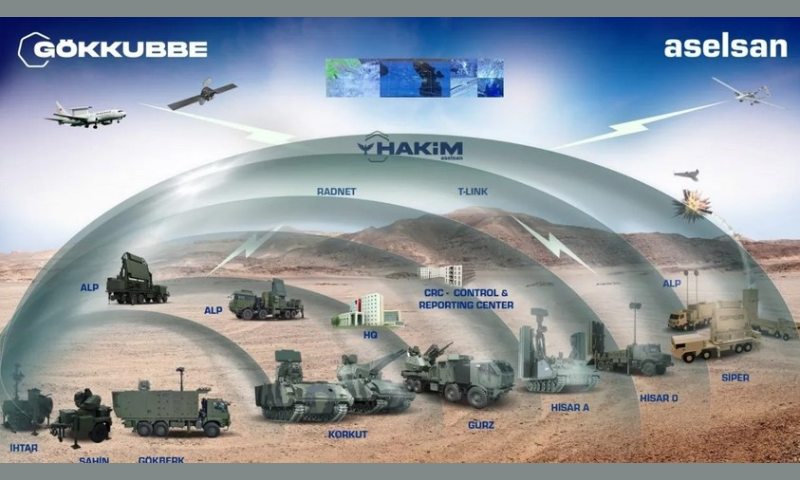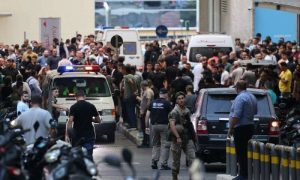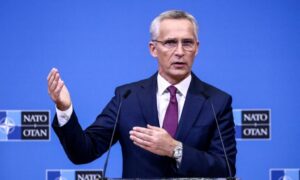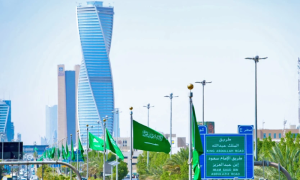ANKARA, Turkiye: Turkiye unveiled plans for its ambitious Steel Dome project, a cutting-edge air defence system designed to enhance the country’s national security using domestically developed technology. This multi-layered shield aims to integrate various defence technologies into a cohesive network, enhancing Turkiye’s ability to respond to aerial threats.
The Steel Dome project represents a significant milestone in Turkiye’s indigenous defence industry. Spearheaded by the defence electronics manufacturer Aselsan, the initiative will incorporate advanced technologies from various domestic producers, including those specializing in rockets, guided missiles, small arms, and artillery. The system aims to unify and enhance Turkiye’s existing air defence assets, including radar systems, electro-optical technologies, drones, satellites, aircraft, and both low and high-altitude missiles.
According to Haluk Gorgun, Secretary of Turkish Defence Industries, the project will leverage artificial intelligence to integrate these components into a real-time operational network. This will enable faster response times and more efficient use of current defence systems. The goal is to create a comprehensive air defence shield capable of addressing diverse threats and enhancing Turkiye’s security capabilities.
Professor Serhat Güvenç of Kadir Has University suggests that while it’s unclear if the Steel Dome will integrate seamlessly with NATO’s air defence systems, its development is intended to complement Turkiye’s existing defence architecture. The project’s design focuses on enhancing interoperability and integrating various defence components to create a robust and layered defence network.
Turkiye has committed to increasing its defence spending to meet NATO standards, which includes achieving more than 2% of national income spent on defence. This move aligns with Turkiye’s broader strategy of strengthening its air and missile defence capabilities, partly driven by regional security dynamics and the need to counter potential threats from neighboring countries.
The project does not involve producing new weaponry but focuses on integrating sensors, processors, and AI to improve coordination among existing systems. This approach is considered cost-effective compared to developing an entirely new missile defence system from scratch. However, experts note that while the integration costs are relatively low, the need for advanced sensors and sophisticated command systems could drive up expenses.
Güvenç emphasizes that the Steel Dome’s core is an advanced battle management system designed to streamline command and control of air defence resources. The integration of AI is expected to reduce the need for a large workforce, although skilled personnel will remain crucial.
The integration of multiple defence components into a single system raises cybersecurity concerns. The Steel Dome project will need to address potential vulnerabilities against cyber-attacks, given that a unified system could become a target for malicious actors.
The timing of the Steel Dome’s announcement reflects the growing importance of air defence in regional conflicts, as evidenced by recent battles in Ukraine and Gaza. The project aims to address Turkiye’s historical deficiencies in air and missile defence and provide a deterrent against potential adversaries.
Sinan Ülgen of EDAM highlights that while Turkiye has made strides in developing national air defence systems, it still lacks a comprehensive, high-altitude defence system comparable to Israel’s Iron Dome. The Steel Dome is expected to fill this gap, providing Turkiye with a significant advantage in protecting its airspace and enhancing its overall defence posture.
The Steel Dome project marks a significant advancement in Turkiye’s defence capabilities, leveraging domestic technology and AI to create a more integrated and effective air defence system. As Turkiye continues to invest in and develop its national defence infrastructure, the project will play a crucial role in shaping the country’s security landscape in the years to come.























